rPET-bottles – Graphene-Enhanced-Plastics 09-06-2022 - Arhive
rPET-bottles – Graphene-Enhanced-Plastics
-RadiciGroup – Roadmap to climate action: in the last decade in RadiciGroup direct greenhouse gas emissions have been reduced by 70%.Target 2030 -80%
Key role of Radici Chimica Novara in reducing the Group’s environmental impact.
Setting concrete environmental sustainability objectives through the abatement of direct greenhouse gas emissions, leveraging investments and cutting-edge technologies: this is the approach that has always guided the activities of RadiciGroup, world leader in the production of a wide range of chemical intermediates, polyamide polymers, high performance technopolymers and advanced textile solutions. A strategy that has proved effective, allowing ambitious goals to be reached: between 2011 and 2020, in fact, greenhouse gas emissions at Group level decreased by 70%, going from around 700,000 tons annual CO2 equivalent to about 200,000 tons.
These results were achieved thanks above all to the actions implemented in the Specialty Chemicals Business area with plants in Novara and in Germany, the heart of RadiciGroup’s chemical activities.
Here adipic acid is produced, a fundamental intermediate in the polyamide 66 chain and which, as a by-product derived from its production process, releases nitrous oxide: it is a gas that does not present particular problems in itself (it is used in the medical sector as anesthetic or in the food sector as a propellant for spray cream), but which, if released freely into the atmosphere, has a much higher greenhouse effect than carbon dioxide.
A multi-year investment plan of over 10 million euros aimed at reducing these emissions involved the Radici Chimica site in Novara with three important interventions: the commissioning, in 2004 of a reactor, designed and patented by the company, which exploiting a catalyst placed on 3 beds decomposes the nitrous oxide into the two elements that compose it (nitrogen and oxygen) making it harmless for the atmosphere; the installation in 2013 of an EnviNOx plant to reduce nitrous oxide associated with the production of nitric acid and, in 2021, a further improvement of the system for abatement of emissions associated with the production of adipic acid. Since the activation of this last plant, in 9 months, more than 35,000 equivalent tons of carbon dioxide have been removed.
All these actions have meant that today Radici Chimica Novara can record a level of nitrous oxide emissions below 10 ppm (parts per million), a almost nil value.
We are the only Italian producers of adipic acid, a fundamental chemical intermediate for numerous industries, in addition to our polyamide 66.
The investments made to improve the environmental performance linked to its process have allowed us to achieve important results to make our business increasingly sustainable – says Maurizio Radici, Vice President and COO of RadiciGroup – We have decided to implement initiatives on the abatement of emissions well before the legislation made it mandatory.
In fact, we started studying the technologies available since the end of the 90s and we promoted the entry of the Italian chemical sector into the European greenhouse gas emissions trading system Emission Trading System (ETS) in 2011, two years before the legal obligation “.
Also in Germany, in 2001 RadiciGroup built an adipic acid production plant “from scratch” equipped with Best Available Techniques including a modern thermal abatement system of nitrous oxide.
By the end of 2022, an EnviNOx plant is also expected to come into operation which, by also reducing the nitrous oxide emissions associated with the production of nitric acid, will eliminate the plant’s direct greenhouse gas emissions.
We are convinced that our companies can grow only by keeping in harmony with all their stakeholders – underlines Angelo Radici, President of RadiciGroup – As regards the reduction of the environmental impact, we continue to invest with a view to continuous improvement, so much so that the recent interventions in the Specialty Chemicals area will allow us to further reduce greenhouse gas emissions at Group level and to reach 2030 with a reduction of around 80% compared to 2011. In addition, in terms of energy, in addition to an innovative trigeneration plant, all of our Bergamo offices use renewable energy that is self-produced or taken from the grid, with the ambitious goal of fully self-producing it from renewable sources. Radici Chimica Novara is directly connected to a high-efficiency cogeneration (CAR) plant that powers it and completely covers its energy needs.
In addition to being committed to energy issues – continues the President – we invest in innovation to develop new projects of recycling and circularity, trying to implement concrete actions for a sustainable future of our companies and the territories in which we operate “.
Other significant investments for the abatement of emissions were made on the RadiciFil site in Casnigo (BG) for the installation of a thermo-compression system that allows a drastic reduction of the steam consumption of the production site, and in Radici Yarn in Villa d’Ogna (BG) for the construction of a trigeneration plant which, through a very high efficiency system, in addition to electricity and steam, produces the cold water necessary for production processes, allowing in 2021 a reduction of water consumption of 30%.
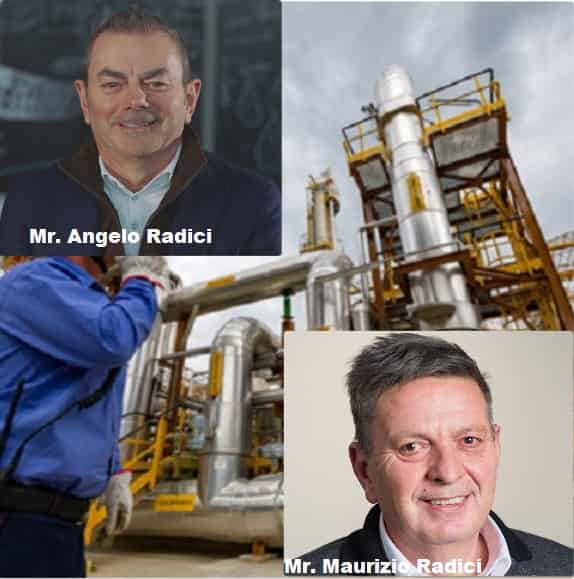
Crude Oil Prices Trend
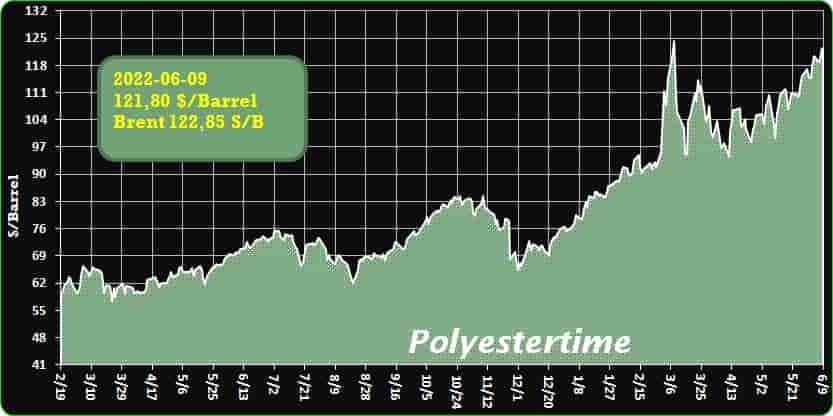
-VTT develops transparent cellulose film to replace traditional plastic in food packaging
VTT is piloting a new transparent cellulose film that reduces microplastic.
Food packages fulfil their most important tasks when they protect food and minimise waste. Thin plastic films are nevertheless difficult to recycle, and they often end up in the wrong places after use.
VTT has developed a solution to the problem of plastic packaging. Regenerated or recrystallised cellulose can replace plastic film.
“We can produce transparent and flexible cellulose film. The consumer cannot distinguish between the crystal-clear material and traditional oil-based plastic. Cellulose film can resist dampness, but in nature it disappears as completely as a sheet of paper does. The product is biobased and biodegradable”, says VTT Research Professor Ali Harlin. rPET-bottles – Graphene-Enhanced-Plastics
In addition to their protective properties, plastics are important because consumers want packages that allow them to see the product itself. However, once they have been used, many packages are sources of problems.
If a package has both paper and plastic, the consumer may wonder if it can be recycled with cardboard, or if the plastic needs to be torn off first. Some of the materials have alternating layers of fibre and plastic. Many packages are placed among mixed waste by people who cannot think of a better way of disposing of it. Plastic that ends up in a cardboard recycling bin can be removed, but the plastic usually ends up incinerated.
“The cellulose film developed by VTT can replace plastic as a more climate-friendly solution. It also makes recycling easy, as it can be placed in cardboard recycling along with other packages”, says Atte Virtanen, Vice President, for Biomaterial processing and products at VTT.
Finland remains far from the goals set by the EU for reducing the environmental harm caused by plastics. At present about 20 percent of plastics are collected, and even less ends up recycled. Under the EU target, 55 percent of plastics should be recycled by 2025.
Plastic film market worth 110 billion dollars
Finland is currently more of a packaging material country than a printing paper country. Last year the value of sales of cardboard exceeded that of paper for the first time. The forest industry is looking for new products with a big market, which bring value-added. rPET-bottles – Graphene-Enhanced-Plastics
Flexible, transparent cellulose film is one such product. The world market for plastic films was about 110 billion dollars last year.
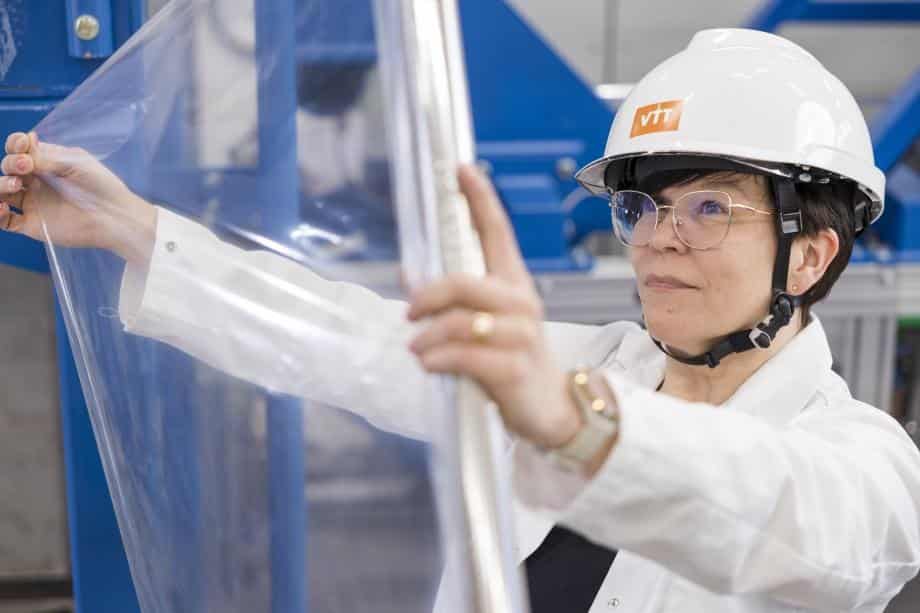
-Nestlé Malaysia pioneers the adoption of rPET in RTD bottles
Nestlé Malaysia is accelerating its efforts to tackle plastic waste by expanding further the use of environmentally-friendly packaging. The company is the first in Malaysia to use high-quality rPET for its Ready-to-Drink (RTD) products in plastic bottles format.
This move is claimed to be in line with the company’s pledge to reduce the use of virgin plastics by at least one-third and make 100% of its packaging recyclable and reusable by 2025 globally, and also in Malaysia.
To date, 90% of Nestlé Malaysia’s packaging materials are already designed for recycling.
The company has also eliminated the single-use plastic shrink wrap for its Milo UHT 125ml products, replacing it with 100% sustainably sourced recyclable paper, and is working to extend this innovation to the rest of the UHT range.
Juan Aranols, Chief Executive Officer, Nestlé (Malaysia) Berhad, said, “Making packaging greener and increasing collection for recycling are key actions in our sustainability agenda. rPET-bottles – Graphene-Enhanced-Plastics
Plastic waste remains a global issue and we are working harder than ever to deliver innovative solutions that are better for the environment. By transitioning to 100% rPET bottles and more paper-based packaging solutions, we reduce the use of virgin plastic and improve our CO2 footprint. This reflects our company’s ongoing commitment to shape a waste-free future.”
Nestlé Malaysia is also partnering with recyclers and municipalities in the Klang Valley to extend systems for collection and recycling and expects to reach 100,000 households by 2022.
“We in Nestlé Malaysia have a rich cumulative experience and a strong understanding of systems for collection and recycling.
We aim to lead by example and look forward to including our retail partners and suppliers in these efforts. rPET-bottles – Graphene-Enhanced-Plastics

-Graphene-Enhanced Plastics Said to Feature Improved Material Properties at Reduced Cost
Graphene additives also bring a sustainability dividend, according to Brazil’s Gerdau Graphene, which is beginning to roll out the enhanced PP and PE masterbatches.
Graphene-enhanced plastics introduced by Brazilian nanotechnology company Gerdau Graphene promise to bring greater overall performance at a reduced cost compared with conventional materials while improving their sustainability footprint.
The new graphene-enhanced masterbatch formulas for polyethylene (PP) and polypropylene (PE) were created in partnership with a government-funded advanced materials center in São Paulo, and are being piloted in a series of industrial applications by Gerdau. rPET-bottles – Graphene-Enhanced-Plastics
The first commercial deliveries are expected in the second half of 2022 in Brazil and will expand to the Americas in 2023.
The presence of additives containing graphene can increase several properties, including stiffness, impact resistance, thermal/electric conductivity, and resistance to degradation, Gerdau Graphene CEO Alex Corrêa told PlasticsToday. “There are many different applications that might benefit from it — flexible and rigid packaging, bottles, automobile parts, plastic furniture, etc. Graphene can also provide process gains, such as facilitating the mixing process due to the reaction effect of carbonaceous fillers, and can also improve productivity in polymer processing, reducing production cycles,” explained Corrêa.
The materials do not require any changes to plastics processing equipment, Corrêa added, although some processing parameters may need to be adjusted to account for increased productivity.
In addition to developing graphene additives for virgin resins, Gerdau Graphene is also working on formulations for post-industrial and post-consumer recycled plastics and polymers, including PP, PE, polystyrene (PS), polycarbonate (PC), and PVC. Each year, the United States produces about eight million tons of PP and 23 million tons of PE, according to figures submitted by Gerdau Graphene. Reducing the amount of raw PP and PE needed to create final plastic products by 30% could save as much as 9.3 million tons of PP and PE plastic from being consumed and ultimately discarded, said the company. rPET-bottles – Graphene-Enhanced-Plastics
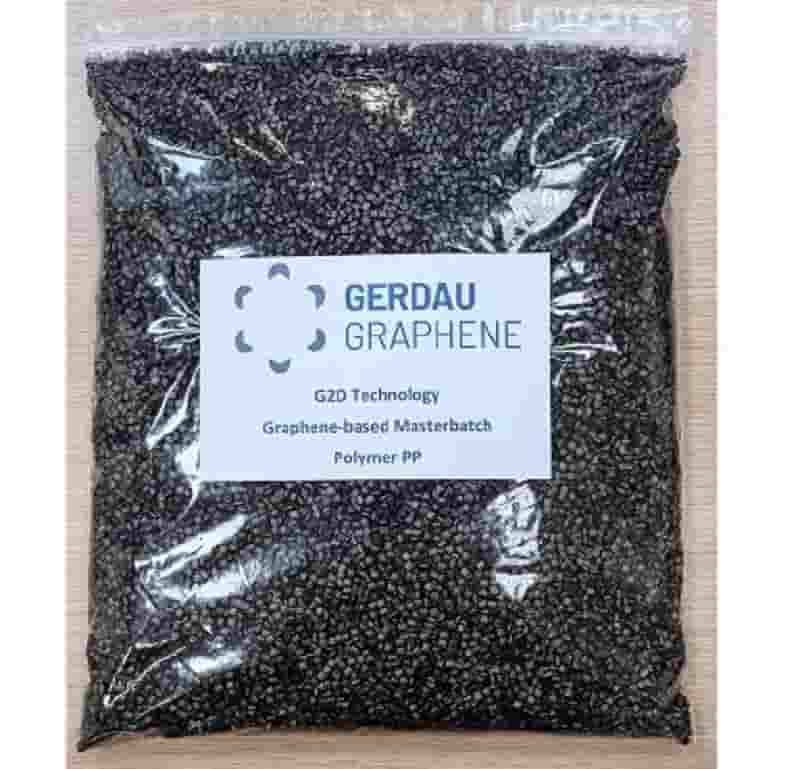
-Trützschler Nonwovens at Techtextil
Trützschler Nonwovens, Trützschler Card Clothing and Trützschler Man-Made Fibers will present a range of new and proven solutions for the nonwoven, card clothing and man-made fibre sectors at this month’s Techtextil exhibition.
Located in booth D80 in hall 12.0, Trützschler Nonwovens will present information on sustainable fibres such as hemp or linen we well as nettle and pineapple fibres.
On show will be the company’s solutions for manufacturing innovative nonwoven products including machinery and complete production lines for paper grade pulp, re-generated cellulose fibers, cotton and various other natural fibers.
Trützschler Nonwovens will also present its latest developments in the field of digitalization. rPET-bottles – Graphene-Enhanced-Plastics
Alongside its software partner Proptium, the company will introduce T-ONE, a new digital working environment for both fibre- and polymer-based nonwoven producers.
T-ONE supports routine tasks such as quality control and recipe management but also enables systematic line monitoring and data collection for T-ONE’s line optimizations.
A further focus is on durable nonwovens for automotive applications or end-uses in filtration, building and construction. Trützschler Nonwovens will present modern solutions for high-productivity, high-efficiency and low maintenance production lines.
Trützschler cards are linked with tailor-made wires by Trützschler Card Clothing. Visitors can explore a range of innovations and reliable solutions that boost productivity in needling, high-speed spunlacing, thermo- and chemical bonding lines.
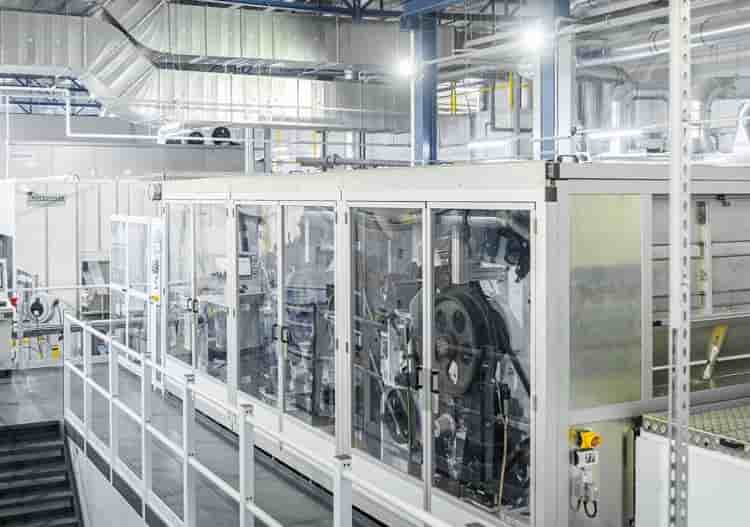
Analysis comprising product-specific emissions from cradle to gate
Market comparison reveals good position for a range of intermediates
BASF has calculated the individual product carbon footprints (PCF) of a large part of its portfolio of chemical intermediates1. The results were compared with assessments of market-wide average carbon footprints of the corresponding products of third parties2. The outcome of the analysis shows that due to the production set-up the PCF of a range of BASF’s chemical intermediates is significantly below the global average PCF of the corresponding third-party chemicals, all produced from fossil-based raw materials. rPET-bottles – Graphene-Enhanced-Plastics
BASF now offers these products as “LowPCF” intermediates:
– Tert-Butylamine (tBA) LowPCF
– Formic Acid (FA) LowPCF
– Propionic Acid (PA) LowPCF
– 1,6-Hexanediol (HDO®) LowPCF
– Neopentyl Glycol (NPG) LowPCF
The PCF comprises the total greenhouse gas emissions that occur until the BASF product leaves the factory gate for the customer: from the extraction of resources through manufacturing of precursors to the making of the final chemical product itself. On its journey to achieve net zero CO2 emissions by 2050, BASF is the first large chemical company to make the individual carbon footprints of all its sales products available to its customers.
Various factors contributing to low product carbon footprint
The PCF is determined by various factors. For example, energy generation in BASF’s own gas-fired combined heat and power plants generates significantly less greenhouse gas emissions compared to other conventional energy generation. In addition, production processes of LowPCF intermediates are characterized by high production efficiency in terms of energy and raw material consumption due to BASF’s integrated Verbund system and continuous efforts in operational excellence. Finally, LowPCF intermediates generally use oil, natural gas or Verbund by-products, but not coal, as primary raw materials. Due to its chemical properties, the use of coal generally results in a higher carbon footprint of downstream products compared to natural gas or oil.
“Company CO2 emission reduction targets are playing an increasingly important role in the value chains we serve. rPET-bottles – Graphene-Enhanced-Plastics
With our LowPCF intermediates, we are supporting our customers in achieving their targets: they now have the option to consciously choose a product with a carbon footprint significantly below the global market average,” says Stephan Kothrade, head of BASF’s Intermediates division. “By making CO2 emission data at the individual product level available to our customers, we also offer a level of transparency that is unique in the chemical industry.”
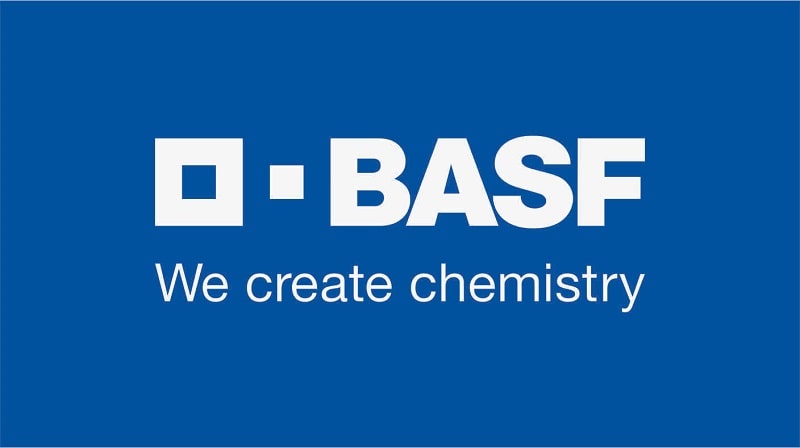
-The truth about plastics recycling
I recently read the report on plastics recycling rates by The Last Beach Cleanup and Beyond Plastics and, like many of you, it certainly was not good for my blood pressure. rPET-bottles – Graphene-Enhanced-Plastics
The pitiful white flag of surrender raised by the reports’ authors certainly does not speak for the tens of thousands of Americans employed by our industry who, amidst a global pandemic, recycled nearly five billion pounds of plastic in 2020.
I received calls and emails from a number of APR members pointing out that the authors’ disingenuous claim of low recycling numbers was achieved by parsing data, resulting in publishing an unfair and distorted assessment of our industry for the public.
Let’s be clear: the debate about plastics recycling today is focused on containers consumers buy and use daily — soda bottles, milk jugs, yogurt tubs, etc. The authors intentionally failed to acknowledge that the low numbers they cite include ALL plastic items, including durable plastic items not collected through community recycling programs.
The fact is that 21% of PET, PP and HDPE rigid plastic packaging – the kind of plastic that makes up 80% of consumer packaging and what consumers put in their blue bins – is recycled. For PET and HDPE bottles, 28% get recycled. We could immediately raise that recycling rate to over 40 percent, using our existing processing infrastructure, if we could get more material into recycling bins and collected.
Simply put, to increase recycling rates, we need to collect more material.
The authors’ suggestion that consumers simply switch to reusable products is not feasible for most consumers and would not make plastics “go away.”
When Americans agree on little else, we are united – 85% – in support for recycling. At the same time, demand from brands trying to get more recycled content into their products is at a record high. rPET-bottles – Graphene-Enhanced-Plastics
It would be ludicrous to abandon plastics recycling now.
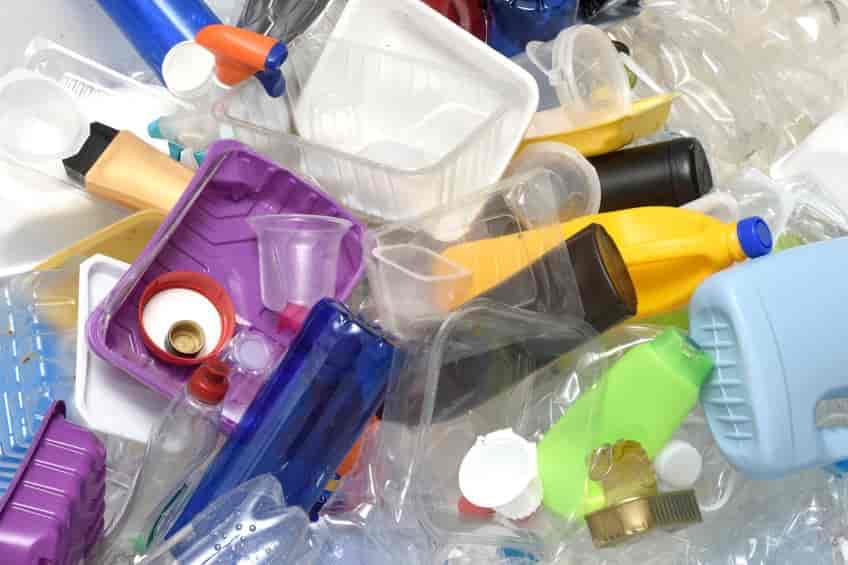
-ExxonMobil Working to Advance Plastics Recycling in Houston and Beyond
Sustainability Challenge:
Plastics used in a range of consumer products and other applications have traditionally been difficult to recycle, often ending up in landfills or as litter.
Chemistry Solution:
Advanced recycling technologies being implemented today at integrated manufacturing facilities can help transform used plastic into valuable materials for new products.
Sustainability Benefit:
- By year-end 2026, ExxonMobil’s investments in advanced recycling technology have the potential to process up to 1 billion pounds annually of used plastics that may have otherwise gone to landfill or incineration.
ExxonMobil has developed advanced recycling technology, which, through April 2022, has processed more than 7 million pounds of used plastics at its Baytown facility, near Houston, Texas. rPET-bottles – Graphene-Enhanced-Plastics
Advanced recycling is a manufacturing process that leverages chemistry and technology to convert hard-to-recycle used plastic like films and pouches into high-quality raw materials for making valuable new products, including plastics.
- By the end of 2022, ExxonMobil’s Baytown operation is projected to be among North America’s largest advanced plastic recycling facilities, with an initial planned capacity to process 30,000 metric tons of plastics each year.
- Plans also are under way to build up to 500,000 metric tons of annual advanced recycling capacity globally by year-end 2026, with potential sites in the U.S., as well as in Europe, Canada and Singapore.
- In addition, co-processing plastic waste via ExxonMobil’s advanced recycling approach results in lower greenhouse gas emissions than using virgin feedstocks when analyzed on an ISO 14067 feedstock basis (ExxonMobil estimates; cradle-to-process unit outlet boundary).
Beyond developing and scaling advanced recycling technology, ExxonMobil is working to increase the collection of used plastics and to develop markets for certified circular polymers:
- ExxonMobil is a founding member of the Alliance to End Plastic Waste, an organization focused on developing scalable and economically viable solutions to address plastic waste in the environment in communities around the world.
- To help fill a missing link in the supply chain, ExxonMobil formed a joint venture with Agilyx Corporation, called Cyclyx International LLC, which is focused on innovative solutions to collect, sort and pre-process used plastics for use in both mechanical and advanced recycling processes.
rPET-bottles – Graphene-Enhanced-Plastics
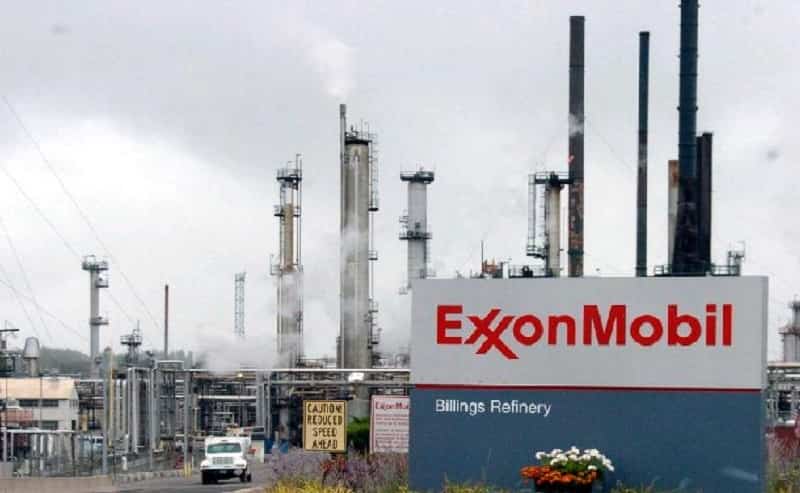
A partnership between TOMRA Recycling and specialist commercial food waste disposal company, Swancote Energy, has resulted in the first application of optical sorting technology in an Anaerobic Digestion (AD) facility in the UK.
In October 2021, Swancote Energy invested in an AUTOSORT® unit from TOMRA Recycling at its state-of-the-art 75,000tpa anaerobic digestion (AD) facility in Bridgnorth, Shropshire. rPET-bottles – Graphene-Enhanced-Plastics
The facility produces renewable energy is from a combination of commercial food waste and purpose-grown energy crops. Combined heat and power plant generators convert the biogas into electricity and heat, with the electricity fed directly to a local aluminium smelting company. The new AUTOSORT® unit is enabling Swancote Energy to recover recyclable plastic packaging from commercial food waste which can then be used in the production of new food-grade plastic packaging.
The plant’s infeed stream comprises of palletised food waste from multi-national food manufacturers, retailers, distributors and small independent businesses. Many different types of food waste are processed at the plant, including loose, liquids and palletised. The infeed stream contains a wide range of packaging materials such as plastics, tins and glass. Swancote Energy uses a number of different mechanical and automated processes to recover all recyclable products for recycling, including glass, tin cans, aluminium products and plastics.
Following the installation of TOMRA’s AUTOSORT® unit, Swancote Energy can now process 50,000 tonnes per annum of palletised food waste while ensuring the rigid plastic packaging – including HDPE, PP and PET bottles, tubs, trays and pots – is all recovered for resale.rPET-bottles – Graphene-Enhanced-Plastics
The organic matter is removed first before the material goes through a hot wash prior to being optically sorted. The AUTOSORT® unit is the final stage in the process of depackaging of the food. Once recovered, the recyclable plastic packaging is sold on to food-grade plastic recycling facilities, allowing Swancote Energy to provide its customers with a closed loop recycling solution.
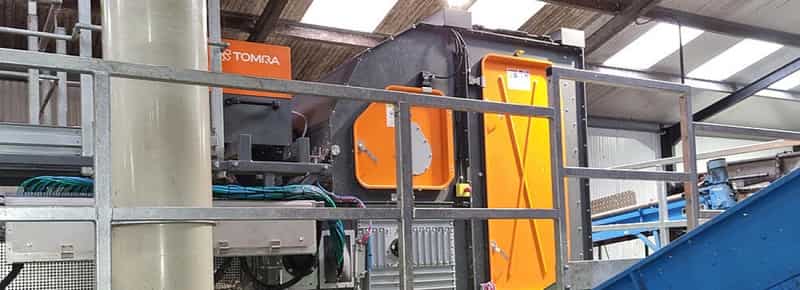
rPET-bottles – Graphene-Enhanced-Plastics
